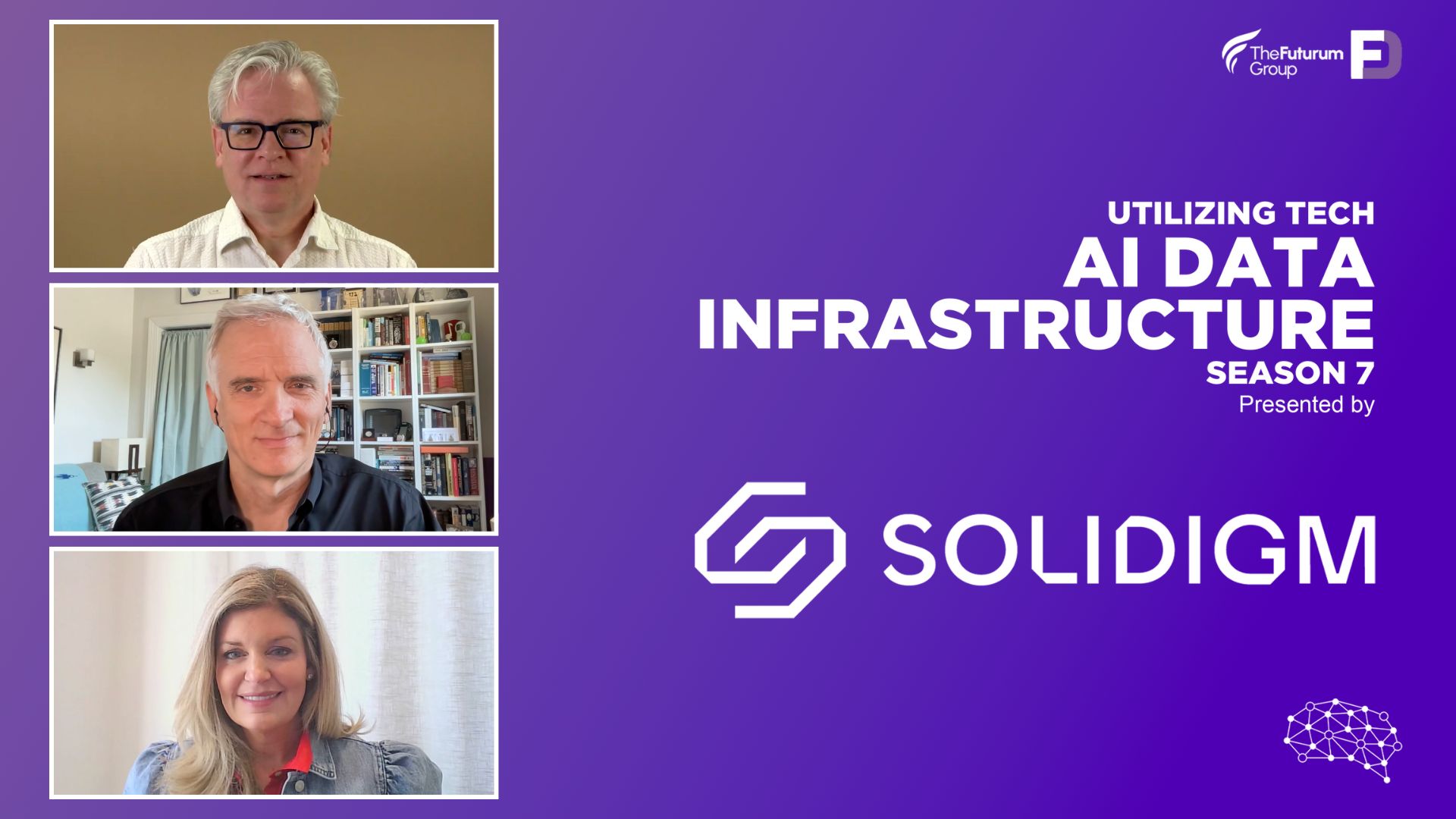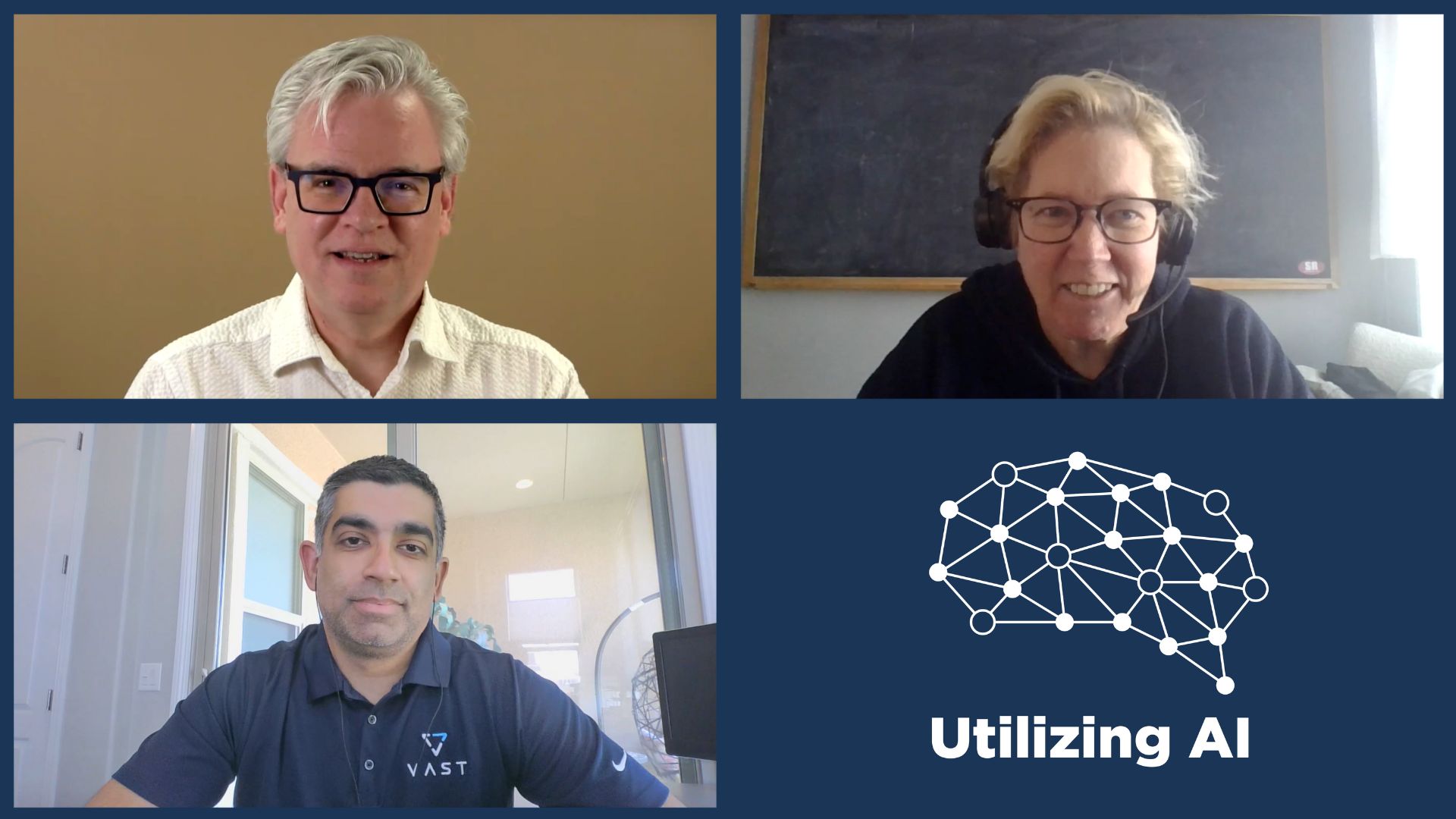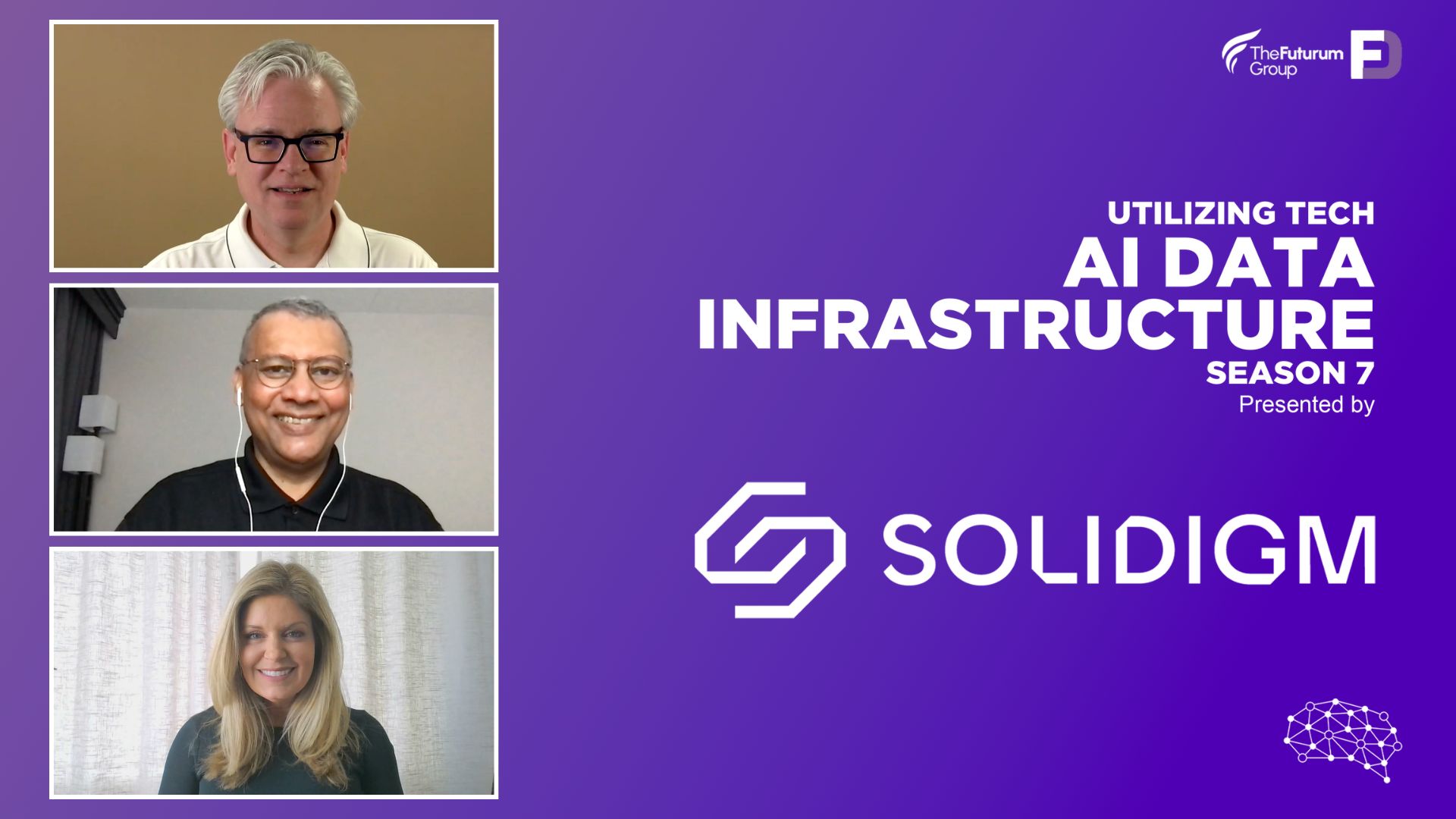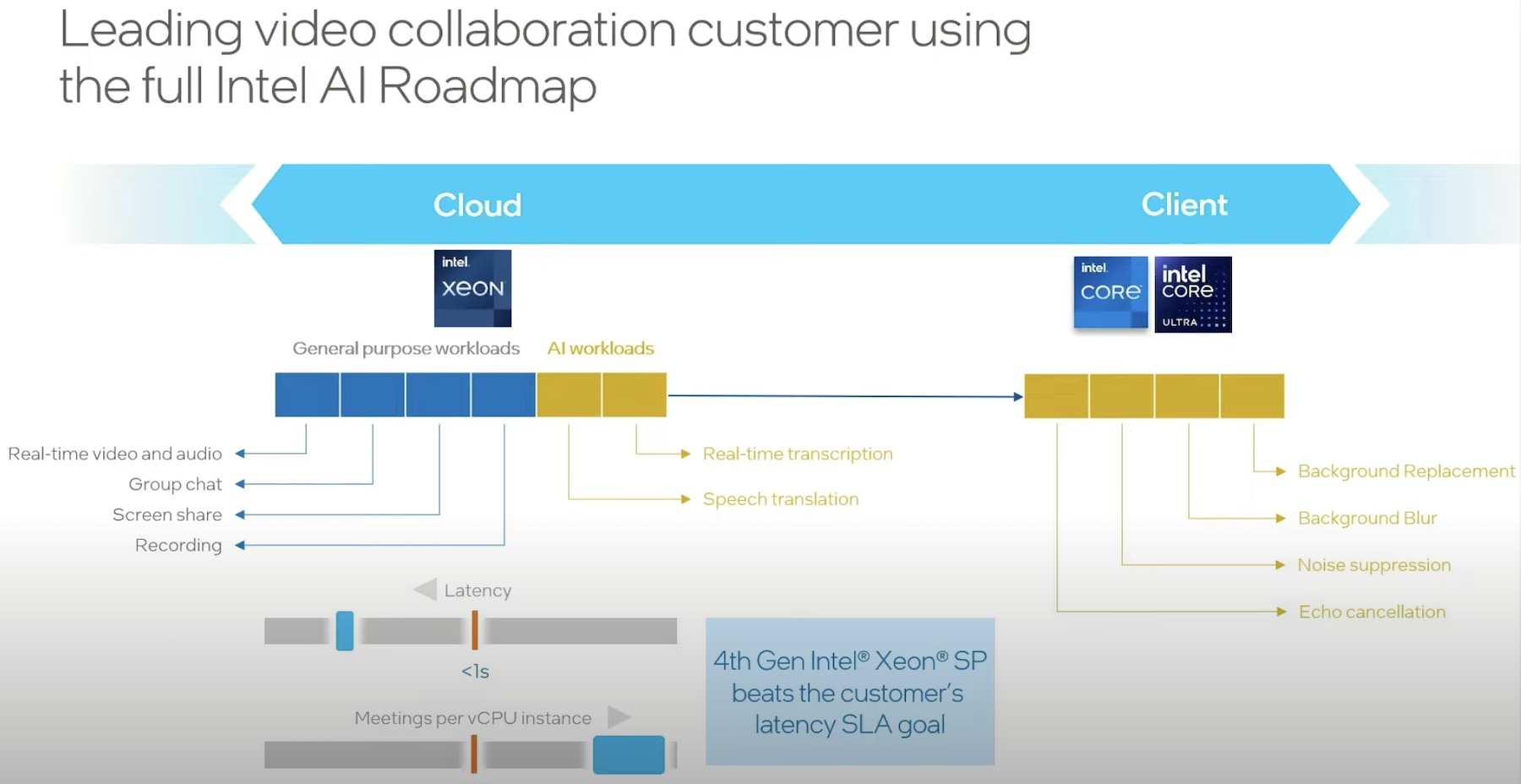How can organizations deal with massive amounts of data in an intelligent manner? Throw AI at it, of course, but then the question becomes, with what? Intel believes they have the answer with their open-sourced Analytics Zoo platform, which they presented at May’s AI Field Day event.
Addressing the Growing Problem of Big Data
As of three years ago, the physical weight of all of the data stored on the internet increased from that of a strawberry (50 g) to about 5 ounces. When put on such a scale, that amount seems somewhat insignificant, but today’s IT organizations know that there are metaphorical tons of data at their disposal. With zettabytes on zettabytes of data being generated year over year, one of the most critical tasks heaped onto the plates of IT practitioners is making the most of said data, often through data analytics.

By consuming and operating on data, organizations can identify many key performance indicators, whether in regards to their operations, their processes, their marketing, sales, etc. The sheer amount of data at an organization’s disposal, however, means that it’s difficult to hone in on the most important points without spending loads of time. What’s more, as IT organizations continue to recover from last year’s budget cuts, finding ways to analyze data at massive scales without breaking the bank also proves less than simple.
Efficient Big Data Analytics through AI
Intel offers a solution that not only smartly analyzes big data with the help of artificial intelligence, but offers it in a completely open-sourced fashion. Intel’s Analytics Zoo combines big data analytics with the power of AI to build and productionize end-to-end data pipelines on their Xeon architecture. Analytics Zoo also combines with other Intel features like SGX to ensure data remains confidential while being processed.
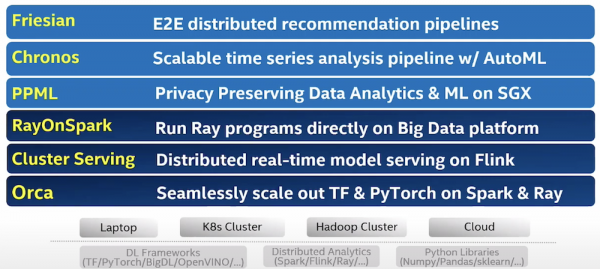
Looking at the diagram of the Analytics Zoo platform above, one of the more intriguing “animals” in the Zoo (and, in fact, the only one named after an animal) is Orca. Using Orca, a single developer can create, test, and deploy an AI-driven analytics model from their laptop, and then deploy that model out to the cloud in a Kubernetes or Hadoop YARN cluster. Doing so allows organizations to easily and effectively scale their data analytics to a massive scale, backed by the extensibility of the cloud.
Analytics Zoo in Action
During their appearance at May’s AI Field Day event, Intel’s Chief Architect of Big Data AI, Jason Dai, presented stories of how Intel customers are using Analytics Zoo. The first customer Dai touched on is Burger King (which, serendipitously, I was eating as I wrote this piece).
In the case of Burger King, Intel’s Analytics Zoo is tied into their menu app, acting in the background and leveraging both information gathered from their customers at large, as well as the individual operating the app. Analytics Zoo intakes all of that information and brings it back to the app in real-time to help recommend food items that the user would be most inclined to order. It also offered the user deals based on several key indicators: location, previous orders, and even time of day, as some offers are only valid for breakfast. In practice, Burger King found that this approach helped drive business by creating a customized, tailored experience for their app’s users, who were then more inclined to use the promotional offers than before the introduction of Analytics Zoo.
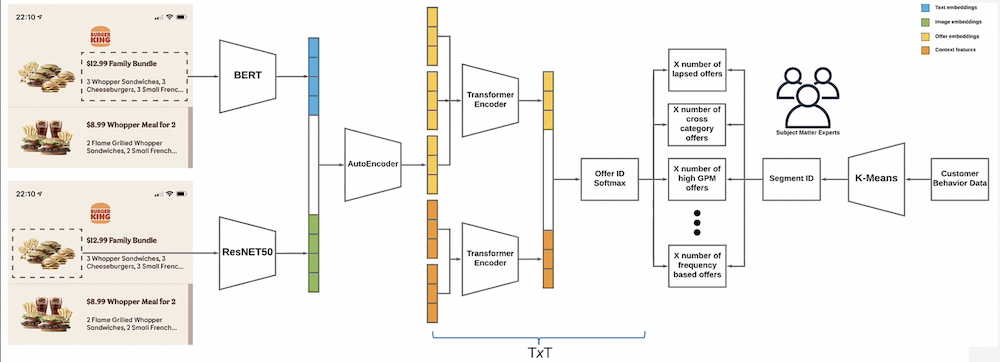
Perhaps more interesting than the business value is the deep learning model at play in Burger King’s Analytic Zoo rollout, dubbed DeepFlame. As seen in the graphic above, four different AI models — BERT, ResNET50, TxT, and K-Means — work in sequence to deliver the full DeepFlame experience for users of the Burger King app.
BERT works by identifying the actual text of the offer itself, what food is included, the price, etc. It’s compared against the respective image for that offer, which is sourced by ResNET50. TxT, which Dai introduced at the previous AI Field Day event. This compares the offers against the probability that a user will be interested in them based on Burger King’s selling models and sales results. Finally, all of that information is funneled through the K-Means model, which compares everything against the behaviors of the actual user of the app, delivering a final experience of offers that have the highest likelihood of being browsed and selected by the user.
Zach’s Reaction
The use cases for Analytics Zoo are fascinating, and practically anyone can spin up their own big data analytics operations powered by AI, making it invaluable for nearly any size operation. And, since it can run both on a laptop and in massive-scale cloud environments, I think we’ll be seeing a lot more of Analytics Zoo in the future, too.
Learn more about Analytics Zoo by watching Jason Dai’s presentation above or checking out Intel’s website. You can find everything you need to spin up Analytics Zoo at its GitHub repository.

